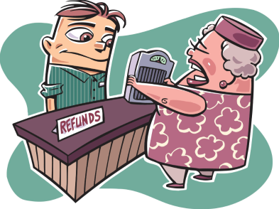How Returns Analysis Can Increase Your Profits

In today’s economy, return rates are at all-time highs – with eCommerce return rates nearing 40%. When customers return product, the business incurs increased costs (and faces reputational risks that could potentially lead to less sales in the future. In addition to financial consequences of returns, most of the retailers report that dealing with returns has an overall negative impact for running day-to-day business.
Therefore, reducing customer returns leads to overall increased profitability. Also, less returns means more happy customers. With customer acquisition costs growing higher and higher, our goal should be to keep our existing customers happy. One bad return experience, and customer may never shop with us again.
Benefits of analyzing returns (and taking action!):
- Increase in sales
- Decrease in expenses
- Good company reputation
- Improved customer satisfaction
Refunding the customers without understanding the reasons why, won’t help us in the long term. When running a business, mistakes are inevitable. What is important though, is to learn from such mistakes and improve strategies and actions to prevent them in the future.
Typical reasons for returns include:
- Incorrect item sent to customer (either customer ordered wrong item or we shipped incorrect item)
- Product quality issues (product arrived damaged, product does not work at all or does not work as expected)
- Product no longer needed by customer
We don’t have control over all return reasons, but some of them can be avoided before the purchase is made.
If we are able identify what mistake our company makes the most, we can take proper action to eliminate it which will lead to lower return rates, happier customers and decrease in costs. Again, if we don’t know the reason behind customer returns it is impossible to tackle them successfully.
In the table below, there are possible solutions to problems identified presented.
Problem identified
Action to be taken
Customer ordered wrong item
- Increase accuracy and detail of product description
- Post good quality pictures
Wrong item was shipped
- Provide product training for employees
- Implement control: e.g. check against order in the system before releasing the shipment
Damaged / faulty product received
- Increase packaging quality
- Use shipping insurance
- Increase / implement Quality Control
- Product redesign (manufacturers) / finding new, more reliable suppliers (retailers)
Customer does no longer need the product
- Offer discount on next purchase instead of returning cash
If you would like to analyze your returns, ask your accountant about return report. You can also try our tool CUSTOMER RETURN DASHBOARD in Excel for free. It is is simple to use and it helps to standardize returns reporting. It also enables you to generate reports so you can share your discoveries with others! You can download a demo below:
GET FREE DEMO


